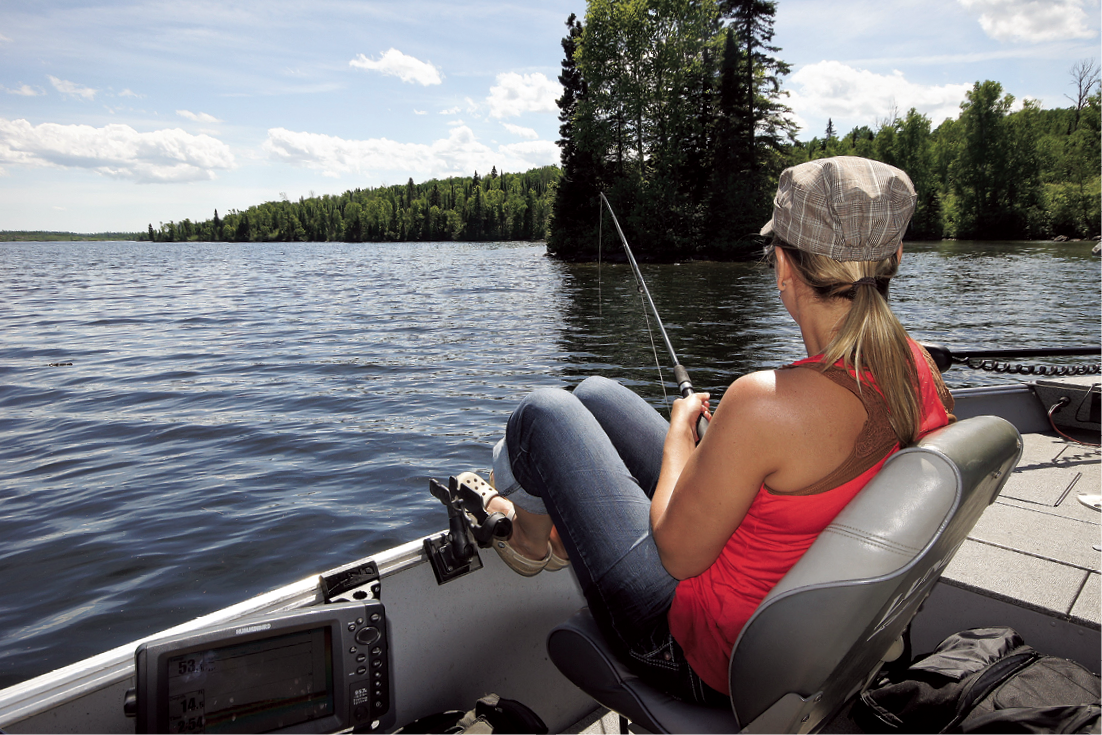Starting out any kind of new pursuit is full of challenges. Everything is new and you may not always know what basic fishing gear is required. Yes, the Internet can provide advice, as can sales people. However, a lot of the time you will be upsold, especially when it comes to fishing. Every year I see new anglers with shiny, fresh-from-the-store gear that is both impractical and horrifically expensive. I’m not here to do that. While the Internet might not agree, I have some beginner fishing tips on the basic gear a first-time angler should have.
Rod and Reel
The first-time angler who wants to fish for a mix of species is best served by a medium action spinning rod and open-faced spinning reel combination. Casting a spinning reel takes a little practice, but it’s the best option for the widest variety of situations. The rod should be six or seven feet in length, and be a medium action. This will be labeled on the rod near the handle. A graphite rod is a pretty standard choice these days, although there are options. If you are the kind of person who breaks things easily, an Ugly Stik is a fishing rod to consider. The Ugly Stik is practically indestructible and is a good all-around tool.
You will need to put line on the reel and your best bet is a 6-or 8-pound monofilament line. There are many types of line, but buy a name brand monofilament like Stren or Berkley to start. Rods and reels can generally be purchased together these days as a matched pair. That’s a good way to buy a balanced outfit. There are also starter kits that include a rod, reel and some basic tackle. Most of the starter fishing kits look—to me—a bit cheap. Buy the rod and reel and then make up a little kit of tackle from the suggestions that follow.
Hooks and Sinkers
All fishing requires something with hooks, like a lure, or plain hooks you can bait. Every angler should have some plain hooks that can be baited with live or artificial bait. There are a million hook choices. One good option is to buy a mixed container of both long and short shank hooks of various sizes. The smallest size about #8 and the largest #2. That will cover most situations. If you don’t know how to tie a hook, you need to learn. These days, YouTube is about the fastest way to learn various knots. However, there are snelled hooks you can buy already tied to leaders, although you will still need to tie a metal clip on the line to hold the snell.
As for sinkers, your best bet is a selection of squeezable split shot. These types of sinkers can be put on—and taken off—the main line easily, just by squeezing the two small wings on the weight. Split shot come in both lead and non-lead alternatives, and can often be bought in containers featuring several sizes of weight. For the first-time angler, the selection of weights is the most useful choice.
I’d also strongly recommend buying a few bobbers or floats for your kit. A bobber is a great way to suspend bait off the bottom without getting hung up. It also gives you a visual clue when you are getting a bite. The cheaper, most simple bobbers clip to the line, and are red and white plastic. However, there are many other options, including the slip float, which allows the bobber to slide freely on your main line when you cast.
Lures
The sheer number of lure options available to an angler is jaw dropping. So, for a first-time angler, it can be rather intimidating to walk up to a tackle store wall and know what to get. However, there are a few evergreen choices that never get old. The most useful and basic of all lures is the jig. A jig is just a long shank hook with a lead weight attached. On the hook, you can add a rubber twister body or a minnow shaped body, among many other choices. Another option is a bucktail jig, which uses coloured hair as an attractor. Jigs can be used to catch every species of fish in a wide variety of ways. They can be vertically jigged just off the bottom, or cast out and made to swim back with an undulating motion. You cannot go wrong with a few jigs in a tackle box.
Other lures that should be in your tackle include a small selection of spoons, such as the Dardevle and Little Cleo; a few spinners, including the #3 Mepps Aglia and Panther Martin; and a minnow shaped crankbait like the Rapala Husky Jerk and Rapala Countdown. All anglers end up collecting lures, many of which never get wet. However, the ones listed here have a history of catching fish and are solid choices.
Fishing is a fantastic past time and will give you a life-long outdoor pursuit. These beginner fishing tips have outlined the basic gear needed for a first-time angler, but it will be up to you to put the time in and to discover the joys and mysteries of angling.
It’s a trip worth taking.





